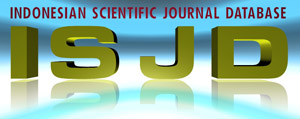PEMANFAATAN TEPUNG SINGKONG SEBAGAI SUBSTITUSI TERIGU UNTUK VARIASI CAKE
DOI:
https://doi.org/10.23887/jish-undiksha.v5i1.8283Abstract
Abstrak Tujuan penelitian ini untuk memperoleh variasi cake dari tepung singkong dengan mensubstitusi terigu. Karena terigu merupakan produk impor olahan dari gandum, sebagai usaha mendukung peningkatan ketahanan pangan. Penelitian ini menggunakan metode penelitian eksperimental semu di laboratorium karena keterbatasan untuk mengontrol semua variabel yang relevan. Instrumen pengumpulan data menggunakan lembar observasi untuk memperoleh data uji kualitas dari panelis terlatih, sedangkan data uji selera diperoleh dari masyarakat umum untuk mengetahui keberterimaan variasi cake singkong. Analisis data penelitian dilakukan secara deskriptif kualitatif. Hasil penelitian memperoleh kualitas cake singkong pada kriteria yang sempurna pada, (a) pound cake dengan substitusi 80% bahan utama, (b) roll cake dengan substitusi 100% bahan utama, tetapi kualitas tekstur terendah, (c) chiffon cake dengan substitusi 100% bahan utama, serta pengembangan (volume) maksimal, (d) bolu kukus dengan substitusi 80% bahan utama, tetapi kualitas aroma terendah, (e) sponge cake dengan substitusi 80% bahan utama, tetapi semua kriteria terendah, (f) brownies dengan substitusi 100% bahan utama, serta semua kriteria tertinggi, (g) fruit cake menggunakan buah-buahan lokal dengan substitusi 100% bahan utama, serta semua kriteria tertinggi, dan (g) rainbow cake dengan substitusi 100% bahan utama, tetapi kualitas tekstur terendah. Secara umum keberterimaan masyarakat sangat menyukai variasi cake singkong, tetapi sponge cake dan rainbow cake memperoleh keberterimaan terendah. Dengan demikian 8 jenis cake dapat menggunakan tepung singkong sebagai substitusi terigu untuk mendukung peningkatan ketahanan pangan. Kata kunci: tepung singkong, variasi cake, substitusi terigu Abstract The purpose of this study to obtain a cake variation of substituting wheat with cassava flour. Because wheat is imported products processed from wheat, in an effort to support increased food security. This study uses a quasi-experimental research in the laboratory because of the limitations to control all the relevant variables. Data collection instrument uses observation sheets to obtain quality test data from trained research, while the taste test data obtained from the general public to determine the acceptability of variation cassava cake. The data analysis was conducted by qualitative descriptive study. Research results obtained quality cake cassava on the criteria perfectly on, (a) pound cake with a substitution of 80% of the main ingredient, (b) roll cake with substitution of 100% main ingredient, but the quality of the texture of the lowest, (c) chiffon cake with substitution of 100% the main ingredient, and development (volume) maximum, (d) steamed sponge with the substitution of 80% of the main ingredient, but the quality of the aroma room, (e) sponge cake with a substitution of 80% of the main ingredient, but all the criteria lows, (f) brownies with substitution 100% main ingredient, as well as all the supreme criterion, (g) fruit cake using local fruits by substitution of 100% main ingredient, as well as all the supreme criterion, and (g) rainbow cake by substituting 100% main ingredient, but the texture quality lowest. In general acceptability of the community is like the variety of cassava cake, but the cake and rainbow sponge cake obtain the lowest acceptance. Thus the 8 types of cake can be used as a substitution of cassava flour wheat to support increased food security. Keywords: cassava flour, cake variation, substitution wheatDownloads
Issue
Section
Articles
License
Authors who publish with the Jurnal Ilmu Sosial dan Humaniora agree to the following terms:
- Authors retain copyright and grant the journal the right of first publication with the work simultaneously licensed under a Creative Commons Attribution License (CC BY-SA 4.0) that allows others to share the work with an acknowledgment of the work's authorship and initial publication in this journal.
- Authors are able to enter into separate, additional contractual arrangements for the non-exclusive distribution of the journal's published version of the work (e.g., post it to an institutional repository or publish it in a book), with an acknowledgment of its initial publication in this journal.
- Authors are permitted and encouraged to post their work online (e.g., in institutional repositories or on their website) prior to and during the submission process, as it can lead to productive exchanges, as well as earlier and greater citation of published work. (See The Effect of Open Access)


.png)
.png)













